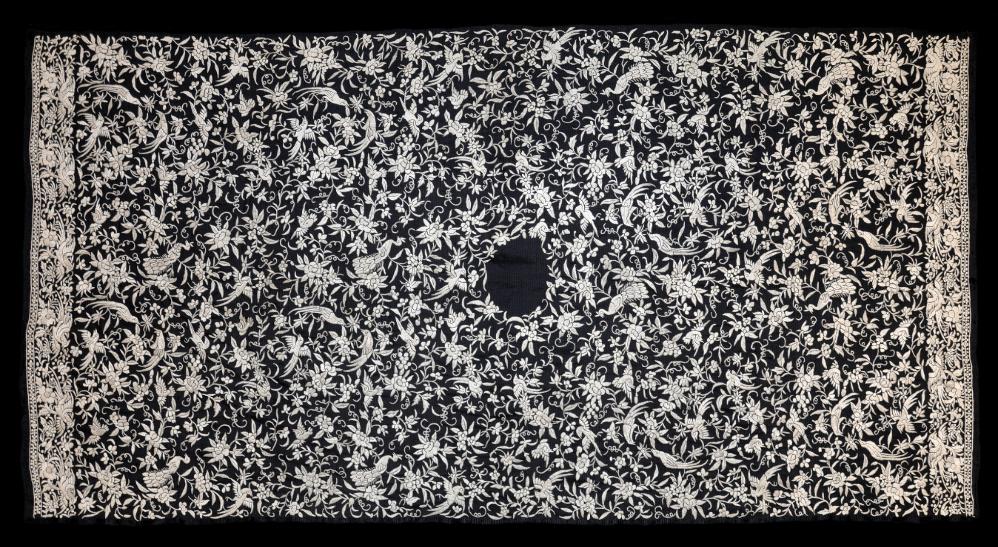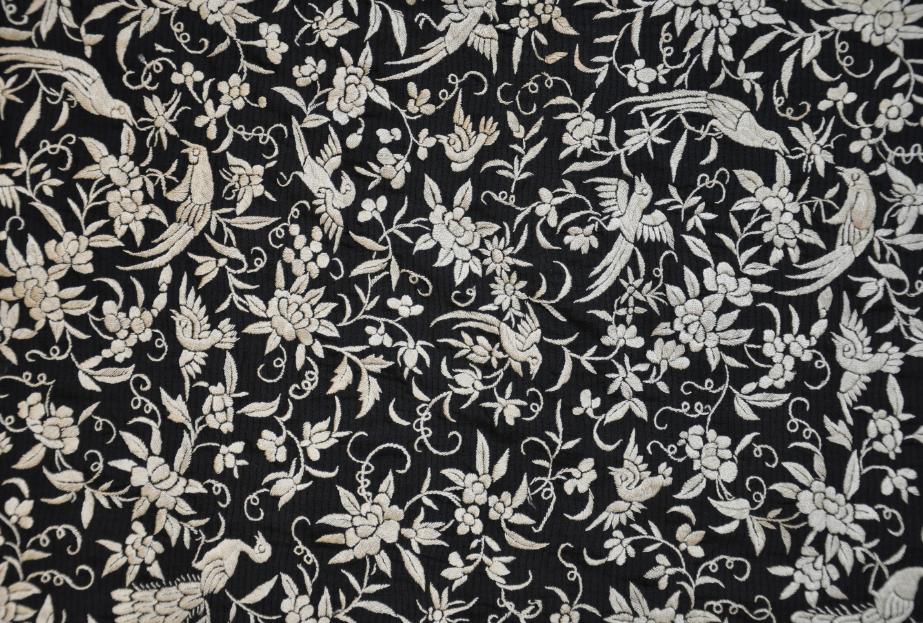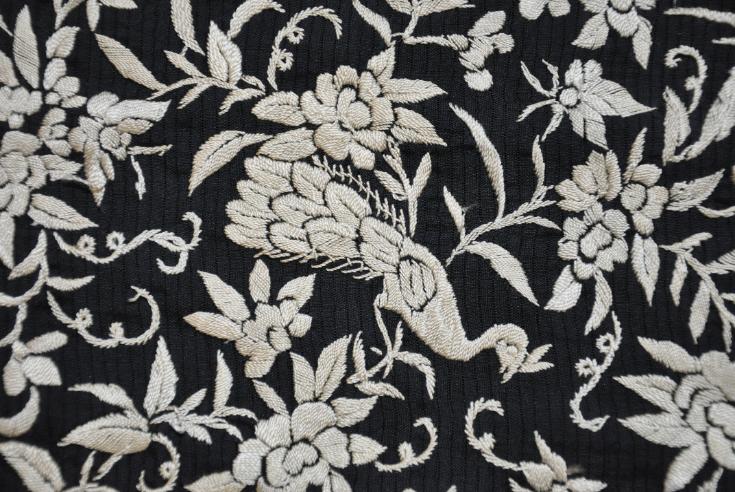
Parsee Parsi Textile
Finely Embroidered Textile
Parsee or Parsi People, Northern India
circa 1900
dimensions: 134cm x 67cm
This very fine black silk textile was possibly intended as a head covering. It was made by or for the Parsee (Parsi) community of Gujarat in Western India. It is elaborately and densely embroidered in cream thread on both sides and in such a way that the textile is fully reversiable and perfect on both sides. Ostensibly Chinese in style, it is a locally-made copy of a Chinese embroidered item. Parsee embroideries were very popular among the Parsee community of India during the nineteenth century.
It is decorated with dozens of birds amongst foliage and flowers around a central oval area that has been left plain and un-embroidered.
Embroidered garments and textiles imported from Canton became popular with the Parsees of Gujarat in the nineteenth century. Many Parsee merchants had agencies and trading houses in Hong Kong and Shanghai as they did elsewhere in Asia, so it was a relatively simple matter for the Parsee community to access Chinese embroidered items for the market back home. The popularity of these Chinese-made textiles became such that the Parsee community began to embroider their own silk garments in the Chinese style. The town of Surat in western India, which had a significant Parsee population, was also home to a long-established embroidery industry, and so Surat became the centre of Parsee embroidery in the ‘Chinese’ style (Shah & Vatsal, 2010, p. 114).
The Parsees, who follow the ancient religion of Zoroastrianism, first came to India from Persia in the 8th or tenth century, fleeing religious persecution. Today, probably there are about 125,000 Parsees or Zoroastrians worldwide. About 70,000 live in Mumbai/Bombay, a city of 14 million people. Another 1,700 live in Karachi in Pakistan. The Parsees of India and Pakistan are a distinct but exceptionally successful commercial minority. By the nineteenth century, Bombay’s Parsee families dominated the city’s commercial sector, particularly in spinning and dyeing and banking. Wealth from these activities was put into property so that by 1855, it was estimated that Parsee families owned about half of the island of Bombay. Today, India’s most prominent Parsee family is the Tata Family, founders and owners of India’s most prominent conglomerate the Tata Group. Despite their wealth, India’s Parsee community is hugely respected and admired in India because of the community’s humility and charitable works which extend way beyond serving members of their own community.
Well-off though they are as a community, the Parsees are dying out. It has been estimated that a thousand Parsees die each year in Mumbai, but only 300-400 are born. Today, one in five Mumbai Parsees is aged 65 or more. In 1901 the figure was one in fifty. Low birth rates are the main factor. Probably no Parsees remain in Burma today.
The textile here is in excellent condition and is without fading,m holes or repairs.
References
Firoza Punthakey Mistree, pers. comm. April 2016.
Shah, S., & T. Vatsal,
Peonies & Pagodas: Embroidered Parsi Textiles – The Tapi Collection, Garden Silk Mills, 2010.
Stewart, S. (ed.),
The Everlasting Flame: Zoroastrianism in History and Imagination, SOAS, 2013.
Provenance
UK art market
Inventory no.: 4182
SOLD




